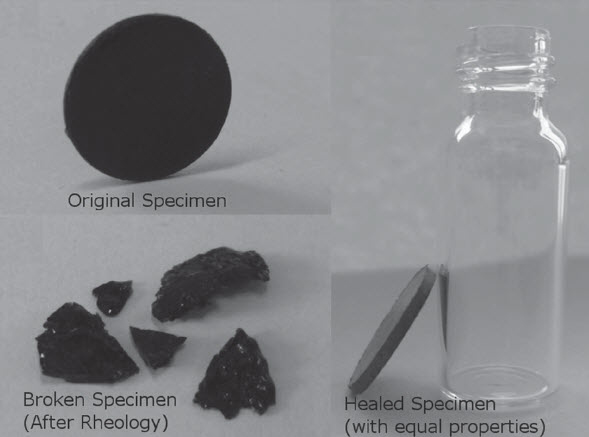A new self-healing chemistry for plastics
April 15, 2014
Scientists at Karlsruhe Institute of Technology (KIT) and Evonik Industries have developed a self-healing chemistry that allows for rapid healing of a plastic material using mild heating, restoring its initial molecular structure. It is based on a reversible chemical crosslinking reaction*.
- The reaction happens at temperatures from 50°C (122°F) to 120°C (248°F).
- The material can be restored completely in less than 5 minutes, and is bound even more strongly than before.
- Flowability is enhanced at higher temperatures, so the material can also be molded.
- The self-healing properties can be transferred to a variety of plastics, including fiber-reinforced plastics components for automotive vehicles and aircraft.
- Healing is also possible for material with scratches.
The research results were published in the journal Advanced Materials. Research partners were the Leibniz Institute of Polymer Research, Dresden, and the Australian National University, Canberra.
* The material uses a new low-temperature reversible system based on covalent chemistry, using “hetero Diels–Alder (HDA)” reactions via a new cyanodithioester compound with cyclopentadiene.
Abstract of Advanced Materials paper
A novel adaptable network based on the reversible hetero Diels–Alder reaction of a cyanodithioester and cyclopentadiene is presented. Reversible between 50–120 °C, the adjustable and self-healing features of the network are evidenced via temperature dependent rheology experiments and repetitive tensile tests whereas the network’s chemical structure is explored by temperature dependent 1H MAS-NMR spectroscopy.
